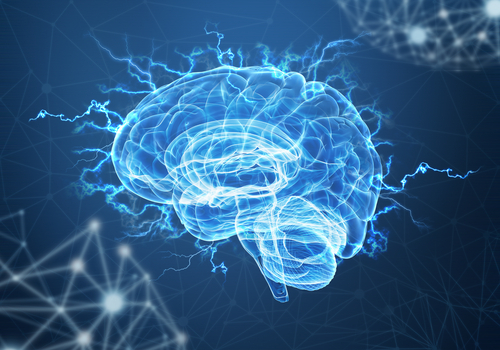Research Into Non-invasive Deep Brain Stimulation Earns Grossman Prize for Neuromodulation

The 2018 Science & PINS Prize for Neuromodulation was awarded to Nir Grossman, PhD, for his research to stimulate deep and specific regions of the brain without surgery as a treatment for Parkinson’s disease and other disorders.
Grossman, who is an assistant professor at Imperial College London and a fellow of the U.K. Dementia Research Institute, will receive $25,000 and his awarded essay “Modulation without surgical intervention” will be published in the journal Science.
“By pioneering new tools and principles, we hope to potentially thwart disease pathology via direct and non-invasive modulation of the underlying neural activity,” Grossman said in a press release.
Established in 2016, the Science & PINS Prize for Neuromodulation is a highly competitive annual prize that honors scientists for their important contributions to the neuromodulation field. To apply, researchers submit a 1,500-word essay in which they describe their contributions based on studies performed in the past three years.
Grossman will present his prize-winning research at a ceremony Sept. 8, during the 9th Annual Meeting of the Chinese Neuromodulation Society in Beijing, China.
Deep brain stimulation (DBS) has shown potential to treat Parkinson’s patients who fail to respond to first- and second-lines of treatment. However, this strategy requires surgery to implant a medical device called a neurostimulator in the brain to deliver electrical stimulus to the areas that control movement. Because it is an invasive technique, there is an increased risk of complications.
To overcome this limitation, Grossman and his colleagues at the Massachusetts Institute of Technology developed a non-invasive DMS strategy that requires only placing small electrodes on the scalp, rather than into the brain.
This new method, called temporal interference stimulation, applies multiple electric fields of different frequencies at once; when combined, it produces a single signal that can be targeted to specific deep brain regions.
“By themselves, the changing electrical currents are too rapid to recruit neural activity, but at the small regions where the currents intersect, the amplitude [or wave height], of their combined currents changes at a low frequency that is capable of stimulating neural activity,” Grossman said.
While other non-surgical brain stimulation methods are already being assessed in human clinical trials, Grossman’s approach has the advantage of stimulating only specific targeted neurons without affecting the activity of their neighbors or overlying regions.
The team has tested their new non-invasive DBS method in mice, as described in its prize-winning essay.
Temporal interference stimulation was safe with no signs of cell death, DNA damage, increased tissue temperature, or seizure risk. Using this approach researchers were able to precisely activate the regions of the motor cortex that control movement of mice whiskers and forepaws.
Join our forums and be part of the Parkinson’s Disease News Today Community!
“This approach opens the door to regulating disordered brain activity in diverse regions of the brain,” said Pamela Hines, who is a senior editor at the journal Science. “Grossman’s innovative and noninvasive technology holds tremendous promise for treating brain disorders.”
Grossman and his team expect to continue working on the temporal interference stimulation method to better understand its underlying mechanisms, but also to further improve its potential to target smaller regions of the brain.
“We hope that the fact that TI stimulation uses well-known electrical fields and does not require chemical or genetic manipulation of the brain tissue will help speed up its clinical deployment, where it may benefit the large patient population in need of neural therapy, ” Grossman wrote.
The team now hopes to further develop its technique together with expert labs around the world, hopefully translating it into clinical research and eventually, new treatments.
“It is clear that this is only the beginning of a potential long journey that requires a close collaboration between the world’s best engineers and clinicians to succeed,” Grossman said.
Carnegie Mellon University neuroscientist Aryn Gittis, PhD, was named prize finalist for her discovery of new therapeutic targets for Parkinson’s disease with her essay “Probing new targets for movement disorders.”






